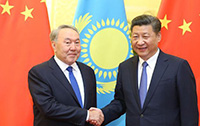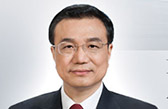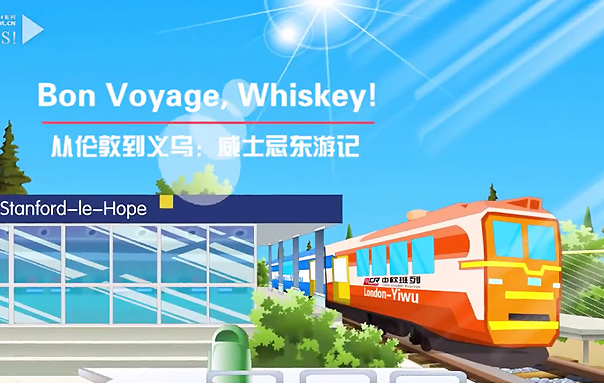Is greater Eurasia a self-sustaining geo-economic ecosytem?
(english.cntv.cn) Updated: 2015-11-23 23:21By Mathew Maavak, doctoral researcher in Security Foresight at Universiti Teknologi Malaysia (UTM)
We are no longer chained-ganged to a universally-dictated global government of any form.
Time to reorient our worldview?
"Global interconnectedness" and “global governance" are the unchallenged buzzwords of the day. But is this Eurocentric axiom relevant anymore? This may appear rather disconcerting, but the Eurasian Economic Union (EEU) or Greater Eurasia – facilitated by Russian geopolitics and Chinese Belt and Road initiatives –may constitute a self-sustaining ecosystem.
Proponents of the global village paradigm may feel spooked, but as the comedian, Groucho Marx once said: “A black cat crossing your path signifies that the animal is going somewhere." That is all. There is no omen, except in minds preconditioned to think otherwise.
Similarly, the flapping wings of a butterfly in Beijing need not induce a hurricane in the United States – as a sensationalist physics theory goes – for it represents the zenith of a humble life that begins from a tiny cocoon. And cocoons produce strands of silk that weave their way around the world, seeking appreciation and markets.
The revived Silk Road is akin to the cycle of life itself. There will be struggles, roadblocks and even setbacks but these can be overcome.
The Eastern mind is less receptive to an integrated global solution for every human problem. If troubles routinely beset households, what more can the global village do? Life is an ever-present struggle for balance. While the East is inspired by the yin and yang, the West resorts to the latest magic bullet, usually with disastrous consequences.
Therein lies the difference between Occidental and Oriental worldviews: One seeks ever greater degrees of control to solve human woes, while the latter seeks to balance discord with prosperity and harmony wherever and whenever possible. While the West seeks a concepts-first approach, the East prefers an “action-first" pathway.
The diametrically opposite outcomes of both approaches can be gauged from global headlines. Which part of the planet is facing greater social instability, financial turmoil and terrorist attacks on any given month?
Asian Renaissance
According to the World Economics Database, Asia's share of the world's real GDP grew considerably faster than all other continents, from 16.8% in 1962 to 44.4% in 2014. But growth rates do not accurately describe the strategic, widening East-West chasm. The Asian renaissance has percolated into every facet of life via products ranging from sandals to surgical instruments to aerospace components.
What is happening to the global village then? It has been transplanted into more fecund grounds in the East. With each passing day, the building blocks of human industry are gravitating eastwards.
A car manufactured in China will have additional local components and innovations over time, it may need an Italian designer or a Swiss patent to complete the product. That Chinese car, however, can still run on older designs and patents.
That makes a world of strategic difference as the East can exist without the West, perhaps at a sub-optimal level, but the West cannot function for a single day without the East.
This is a frightening reality for the West, which may resort to global destabilization and “rebalancing" via its patented variation of the yin and yang called, “shock and awe."
Belt and Road Bazaar
E-commerce giant Alibaba broke global retail records with sales of $14.3 billion on “China Singles' Day" on Nov 11. This constituted an increase of 60pc from last year's 11/11 sales, and likely set to improve next year with an anticipated increase of product offerings and mobile connectivity.
Touching on mobile connectivity, Chinese giants Huawei and Xiaomi are now the third and fourth largest smartphone manufacturers in the world. Xiaomi managed to achieve this feat without even entering the US, European and Australasian markets whose consumers were once considered the global trendsetters.
The global market paradigm is changing as Xiaomi has fewer incentives to penetrate the West and is concentrating on providing a Chinese fillip to the “Make in India" program.
The Redmi 2 Prime smartphone is manufactured in Andhra Pradesh, where it will be deconstructed and improved by online debates and tinkering of Indian geeks who will provide Xiaomi with an innovation-centered feedback loop. Xiaomi smartphone tutorials on YouTube usually come with an Indian accent.
The Silk Road may be lush with many exotic accents, sounds and music, but Alibaba's 40 compatriots have acquired its share of traditional Occidental lilts as well.
A quick online search for a Celtic lyre harp would reveal they are mainly made in Sialkot, Pakistan, along with iconic Scottish bagpipes and accessories. Only Alibaba connects the prospective buyer to the OEM manufacturer – door-to-door – without Western retail mark-ups.
From cutting-edge 4G technology to India's scheduled launch of six Singaporean satellites in December to painstakingly-crafted rosewood harps, Greater Eurasia is a one-stop global bazaar.
This state of geographic autarky will only continue as time is on Greater Eurasia's side. Even its timepieces are achieving autarky. The Russian watch brand, Raketa, is reportedly one of the only few in the world that can manufacture all its components in its country of origin. (Rolex and Swatch do so as well).
The West knows it can no longer compete with the East, except in luxury items that cater to a dwindling few. While Europe is bursting at the seams, Asia is closing ranks. For the first time ever, the leaders of Chinese mainland and Taiwan shook hands to signify a growing Asian renaissance based on pragmatism.
Yet, a trillion-dollar question however: Will the West throw a clunker into the Greater Eurasian machinery?




